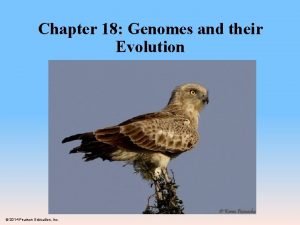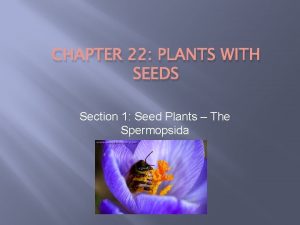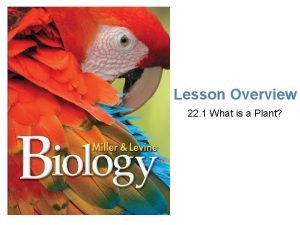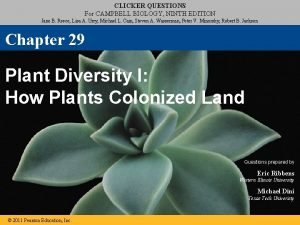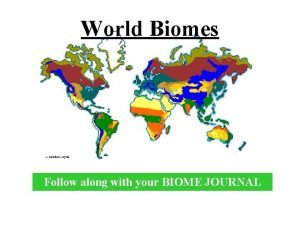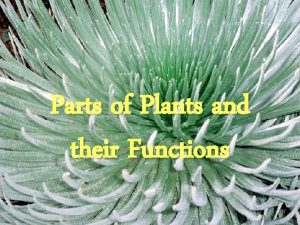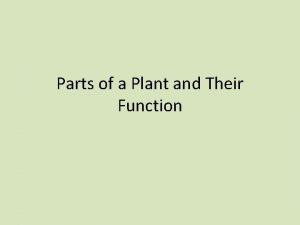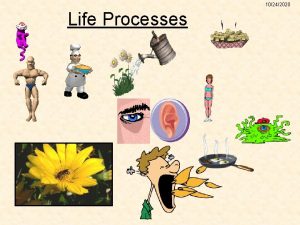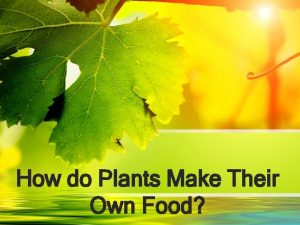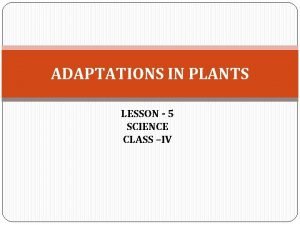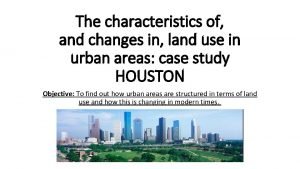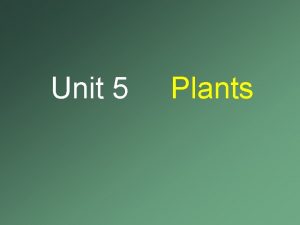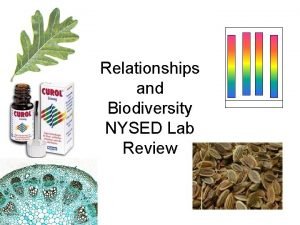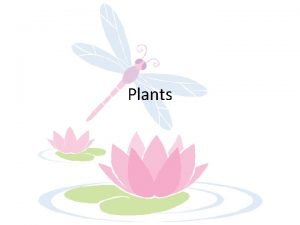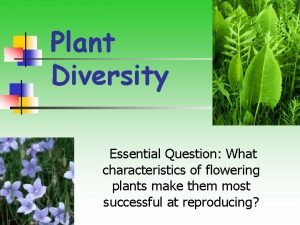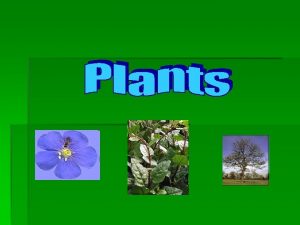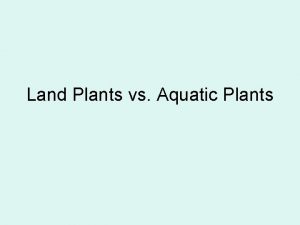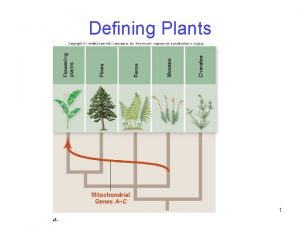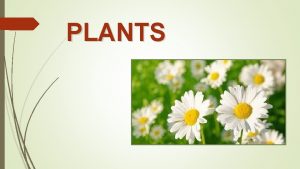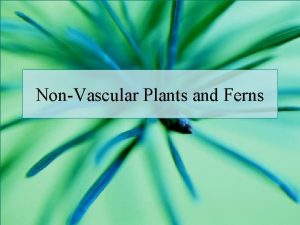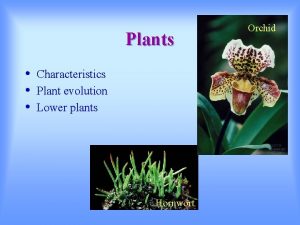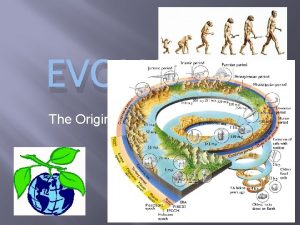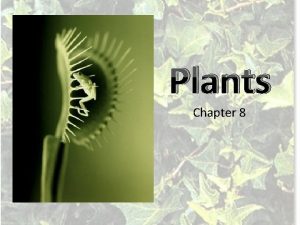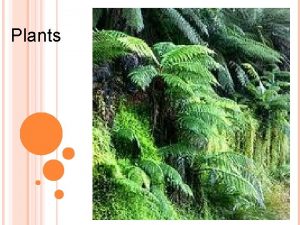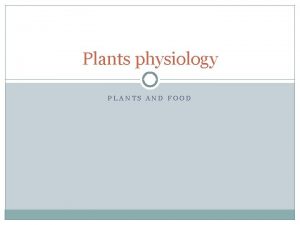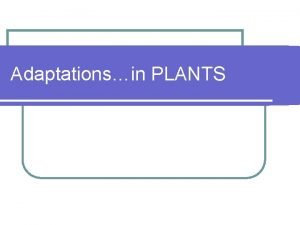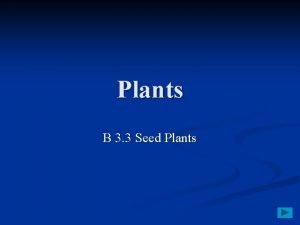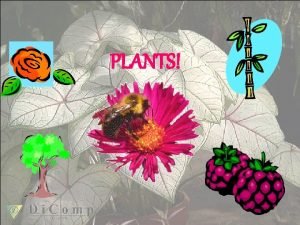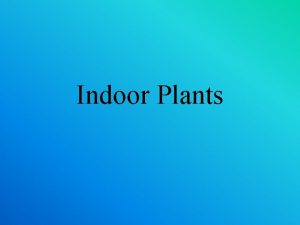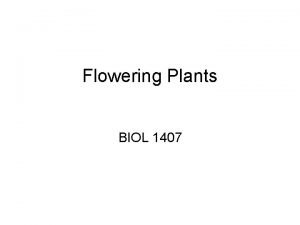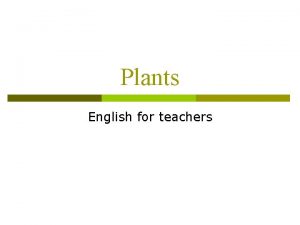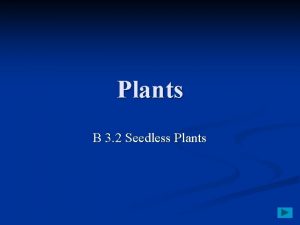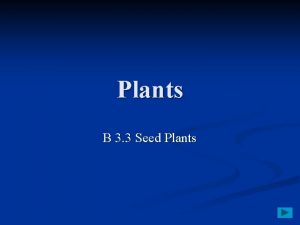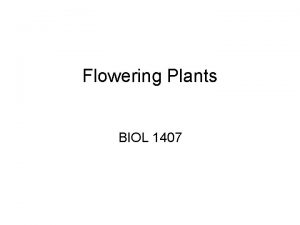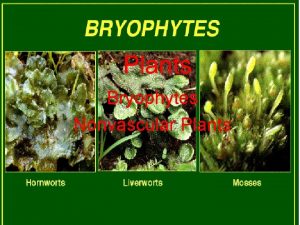LAND PLANTS AND THEIR EVOLUTION Chapter 19 Characteristics



























- Slides: 27

LAND PLANTS AND THEIR EVOLUTION Chapter 19 Characteristics of Plants § Multicellular autotrophs § Cell wall of cellulose § Food stored as starch § Evolved from green algae § Primarily terrestrial



PROBLEMS OF LIFE ON LAND PROBLEM SOLUTION Obtain water Transport water, food Roots and root hairs Xylem phloem Prevent dessication Gravity Obtain CO 2 Reproduce Protect Embryo Cutin, drop leaves, stomates Cell walls, lignin, xylem Stomates Pollen—sperm Seeds, Fruit

Plant Kingdom Non Vascular Bryophytes Mosses Liverworts Vascular Tracheophytes

BRYOPHYTES Mosses and Liverworts 1. No vascular tissue (xylem and phloem) 2. No true roots, stems, flowers or leaves 3. Tiny! 4. Water is required for fertilization 5. Gametophyte generation is dominant.

MOSS ANATOMY § Antheridium: Reproductive structure that makes sperm § Archegonium: Reproductive structure that makes eggs § Protonema: A filament that grows into a new plant

ALTERNATION OF GENERATIONS § GAMETOPHYTE: plant generation that produces gametes § SPOROPHYTE: Plant generation that produces spores

Plant Life Cycle ALTERNATION OF GENERATIONS 2 N n Diploid haploid

MOSS LIFE CYCLE: Alternation of Generations

Antheridia and Archegonia

Figure 29. 16 x Moss life cycle

Figure 29. 16 x Moss life cycle

Figure 29. 18 A moss sporangium with a “spore-shaker” tip

MOSS PROTONEMA Haploid or diploid?

Figure 29. 16 x Moss life cycle

Figure 29. 19 Sphagnum, or peat moss: Peat bog in Oneida County, Wisconsin (top), closeup of Sphagnum (bottom left), Sphagnum "leaf" (bottom right)

Figure 29. 19 x A peat moss bog in Norway


Figure 29. 16 The life cycle of Polytrichum, a moss (Layer 1)

Figure 29. 16 The life cycle of Polytrichum, a moss (Layer 2)

Figure 29. 16 The life cycle of Polytrichum, a moss (Layer 3)

LIVERWORT THALLUS (LEAF-LIKE BODY)

GEMMAE CUPS: REPRODUCTION ASEXUAL

Female liverworts with archegonia § This is a female liverwort.

Male liverworts with antheridia § Gemmae cups

What Sex are these liverworts?
 Chapter 18 genomes and their evolution
Chapter 18 genomes and their evolution Characteristics of flowering and non flowering plants
Characteristics of flowering and non flowering plants An area of land largely enclosed by higher land
An area of land largely enclosed by higher land Identifying landforms
Identifying landforms Spermopsida plants
Spermopsida plants Life cycle of land plants
Life cycle of land plants The closest algal relatives of land plants are
The closest algal relatives of land plants are How does moss reproduce
How does moss reproduce Vascular plants vs nonvascular plants
Vascular plants vs nonvascular plants C3 plant
C3 plant Savanna biome animal adaptations
Savanna biome animal adaptations Function of plant
Function of plant Functions of parts of the leaf
Functions of parts of the leaf 4 parts of plants
4 parts of plants Characteristic of money
Characteristic of money Do plants move on their own
Do plants move on their own What raw materials does a plant need for photosynthesis
What raw materials does a plant need for photosynthesis Green plants make their own food by photosynthesis
Green plants make their own food by photosynthesis How indoor plants make their food
How indoor plants make their food Adaptation of fixed plants
Adaptation of fixed plants Ttl and cmos logic families and their characteristics
Ttl and cmos logic families and their characteristics Romeo and juliet prologue
Romeo and juliet prologue Characteristics of land use in urban areas
Characteristics of land use in urban areas 5 characteristics of plants
5 characteristics of plants Paper chromatography botana curus
Paper chromatography botana curus Characteristics of plants
Characteristics of plants Characteristics of plants
Characteristics of plants Characteristic of plants
Characteristic of plants
